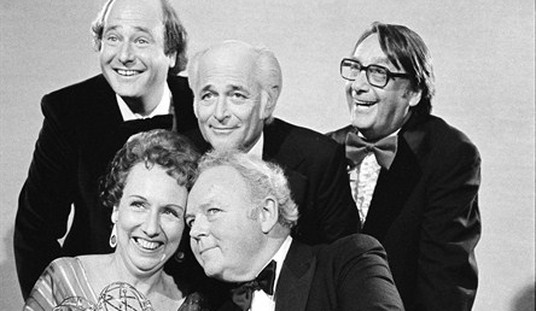Most folks who play around with shotguns know that, back in the day, there were a lot more shotgun gauges available than there are now. These days the 12-gauge is riding tall in the saddle, with the 20-gauge doing duty as a gun for youths and the small-framed, and the old .410 bore (not gauge) finding some use among elite skeet shooters and kids learning the business.
What happened to those other gauges? As recently as the post-WW2 years, the 10- and 16-gauge loads were still seeing plenty of use. The 16 still sees plenty of use in Europe, at least in those localities where the peasantry are allowed to own fowling pieces. But Stateside? Those have mostly faded out, leaving the 12 and 20 holding the bag. The 24- and 32-gauge guns were never popular Stateside (although I examined a lovely 32-gauge double in a New Jersey gun shop a few years ago) and the big 4- and 8-gauge guns were mostly used by market hunters, not sportsmen. The odd little 28 is still around, and new guns aren’t too hard to find, but like the .410, it’s mostly used on the skeet ranges and quail fields. Unlike the .410, it’s not found much in youth-type guns.
But the highly useful 10s and 16s are not much in use these days. Why? First, let’s run through some background on shotguns.
What Do Shotgun Gauges Mean?
Gauge as measured in shotguns is an archaic measure of bore size. A shotgun’s gauge is defined as the number of pure lead balls, the diameter of which equals the bore size of the gun, that it takes to add up to one pound. For modern purposes, bore sizes for the several gauges are defined as:
- 10 gauge: .775
- 12 gauge: .729
- 16 gauge: .663
- 20 gauge: .615
- 28 gauge: .550
The .410 is the odd man out, being defined by the actual bore size. Interestingly, the .444 Marlin rifle cartridge was originally loosely based on the .410 brass shotgun case, and there are revolvers ostensibly chambered for the .45 Colt that will also chamber and fire two-and-a-half-inch .410 shells, which strikes me as a solution in desperate need of a problem; but, as my Grandpa used to say, every cat its own rat.
A recent (as in, post-WW2) development in shotgun loads is the addition of lengthened “magnum” hulls. The three-inch 12-gauge was first, followed by the three-inch 20-gauge, the three-and-a-half-inch 10-gauge, and finally the three-and-a-half-inch 12-gauge Roman candles. The .410, initially a two-and-a-half-inch case, had a three-inch version developed, while the 28 and 16 gauges never joined the fun, still being available only in two-and-three-fourths-inch versions. This is significant for reasons we’ll go into in a bit.
Guns and Loads
This is where we run into one of the reasons that the 10-gauge faded out. The 10-gauge was mostly favored by waterfowlers, who generally are stationary in a blind and not hiking over hill and dale looking for birds, like upland hunters. There’s a good reason for this; geese and even ducks are tough, heavily feathered birds who take some knocking down, and even the old two-and-seven-eighths-inch 10-gauge loads threw big charges of heavy shot idea for this task. But the guns made for the big 10 were mostly large, long, heavy doubles, some weighing as much as 10 pounds. In the late Seventies, the 10 saw a bit of a renaissance with the introduction of the Ithaca Mag 10, and later, Browning introduced a 10-gauge version of its BPS bottom-ejection pump-gun in 10-gauge. But both guns remained big, long, and heavy; I’ve fired an Ithaca Mag 10 and it’s like swinging a telephone pole.
The introduction of the three-inch magnum 12-gauge and, later, the three-and-a-half-inch sealed the fate of the big 10. Now, a hunter after a variety of game could buy a 12-gauge light enough to tote in the upland game fields that would still handle heavy magnum loads suitable for waterfowl or turkey.
With this, the 10 has kind of faded into the sunset. You still see them in the hands of hardcore waterfowlers, and ammo is still readily available, but the big 10 is now strictly a niche market item. And that’s too bad because a hardcore waterfowler would be hard-pressed to find a better gun for big Canada honkers or fast, tough mallards than a three-and-a-half-inch 10-gauge shell throwing two ounces of bismuth shot. The Browning BPS-10 is still available factory-new, and there are plenty of Ithaca Mag 10s and its later development, the Remington SP-10, on the used gun market.
But the sweet 16? That’s a whole ‘nother thing to ponder.

Why? Because none of the niche market criticism of the 10-gauge applies to the 16. The 16 may well be the perfect happy medium in shotguns. It can be chambered in small-framed guns, as Browning did in the famous Sweet Sixteen version of the Auto-5; that fine gun put the 16-gauge shell in a gun using the small frame designed for the 20. I have one and it’s a joy to handle, almost a whole pound light than its 12-gauge counterpart. Ditto for the 16-gauge Model 12 Winchester.
The 16, in a stiff field load, packs plenty of wallop for big ringnecks and sage grouse, while the light, handy 16-gauge guns are light and handy enough for grouse, quail, and doves. My 16s are great for just those things; my wife is a fan of the 16s as well and has two: a newer Citori White Lightning from a limited run in that chambering and a 1950s-vintage Ithaca 37. Up through roughly the late 1950s, plenty of American bird hunters agreed, and the 16 remained popular.
So, what happened? Three things: The increasing popularity of trapshooting, the 12-gauge three-inch magnum, and the 20-gauge three-inch magnum.
Trapshooting is and always has been a 12-gauge game. The 12’s bore is just enough larger than the 20 or 16 to toss a one-ounce load of seven-and-a-halfs in a nice, tight compact pattern with a short shot column, ideal for powdering clay birds. In light trap loads, recoil isn’t an issue, and dedicated trap guns can be heavy enough to eliminate even that bit of kick. But more to the point, the increasing appearance of trap ranges at American gun clubs led to a lot of folks taking their field guns out to the trap range to get some practice in, and the nature of trap shooting over the much more predictable skeet made it better practice for wing shooting – at least, until the advent of sporting clays.
But ammo – that’s where the bite really came, and when it came, it came from two directions. And in this case, it wasn’t so much the new three-inch mags in 12- and 20-gauge as the 16’s sin of omission in not doing the same.
Following the advent of the three-inch magnums in both 12- and 20-gauge, shooters who may previously have chosen a 16 as a great gun of all trades no longer had as much incentive to do so. The 12 was suddenly now much more versatile, coming close to rivaling the 10 as a duck/goose/turkey gun while retaining utility that the 10 lacked for upland game, a trend continued by the later lengthening of the 12-gauge chamber to three-and-a-half inches. For a shooter looking for one gun for all work, the 12 was now the clear choice; I’ve said as much myself, that if a person can only afford one gun, period, end of story, then that person should go forth and buy a 12-gauge pump shotgun.
Moving down the size spectrum, young shooters and those with small frames now had greater reason to choose the 20 over the 16. Both rounds were available in light, small-frame guns but suddenly the 20 opened up with a much wider variety of ammo available, including some loads that approached the level of older 12-gauge two-and-three-fourths-inch field loads.
Meanwhile, the 16 languished in its two-and-three-fourths-inch hull length, and sales of guns and shells declined. In the early 1970s, Winchester dropped production of its excellent AA trap loads in 16 gauge, and thus one of the last sources of high-quality low-brass 16-gauge hulls dried up; nowadays, Winchester, Remington, and Federal are still loading 16-gauge rounds but mostly in field versions with cheap, crappy promotional ammo dominating. Fiocchi still loads a variety of 16-gauge loads as the round is still more popular in Europe than here in the States, so the 16-gauge fan still has some options. But non-toxic loads for waterfowl are pretty limited, and new guns are not much in evidence.
The Upside
Yes, there’s an upside to all this, especially if you’re a 16-gauge fan or are in the market for a big, powerful waterfowl buster. What’s that upside? The market!
Ten-gauge and 16-gauge guns aren’t in much demand these days. There are some exceptions; the Browning Sweet Sixteen Auto-5, especially Belgian guns, still command a premium price, primarily because of collectors (like me.) But Browning BPS-10s aren’t terribly expensive on the used gun market; Winchester Model 97s and Model 12s as well as Ithaca 37s and Remington 11s are readily available in 16-gauge versions and often at attractive prices.
And there’s hope, at least for the 16. The new, supposedly improved (and in my opinion, uglier) Browning Auto-Five is now available in a Sweet Sixteen version; the Browning Citori and the various CZ doubles are available in that gauge as well. Could we be seeing a minor renaissance in the best of all mid-range shotgun loads? Maybe. Time will tell.
The “Other Gauges”
Obscure gauges like the 24 and 32 were never popular in the United States. In the case of these oddballs, it’s not a matter of them fading out as much as that they never faded in in the first place. But could these in-betweeners be useful?
Sure. The 32-gauge European double I examined a while back would make a sweet little item for hiking hills and swales for grouse. Fiocchi still loads 32-gauge shells, although loads are limited to a number-6 field load and a lighter upland load with number-8 shot; but this pretty little, tiny-framed double with its graceful slim barrels and its lovely European walnut stock really belongs in the field, not languishing in some gun shop’s rack where it won’t likely move because of its odd chambering.
The 24, on the other hand, is one where I can’t really offer much information. As far as I’ve been able to determine, the 24 isn’t loaded by anyone anymore, and I couldn’t tell you the last time I stumbled across a 24-gauge gun. While the 16 was left behind by advances in neighboring gauges, the 24 seems to have died a death of apathy.
In Conclusion…
Old shotguns are fun.
Now that I’m done belaboring the obvious: Just because a certain shotgun gauge is no longer popular doesn’t mean it’s not useful. My wife and I have a lot of fun with our 16-gauge guns. I’d love for Winchester to bring back an AA trap load in the 16–gauge, but then I’d love for someone to bring back the .25 Stevens rimfire again – or even bring out a nice new light lever gun in the .25-20. I probably won’t get any of those things, but the world’s got no shortage of windmills to tilt at.
If you have some extra bucks to indulge in a shooting addiction, don’t overlook the 16. The story of the oddball gauges is an interesting one and, given the changes in technology and markets, may have been inevitable, but that doesn’t mean they aren’t worth another look.














